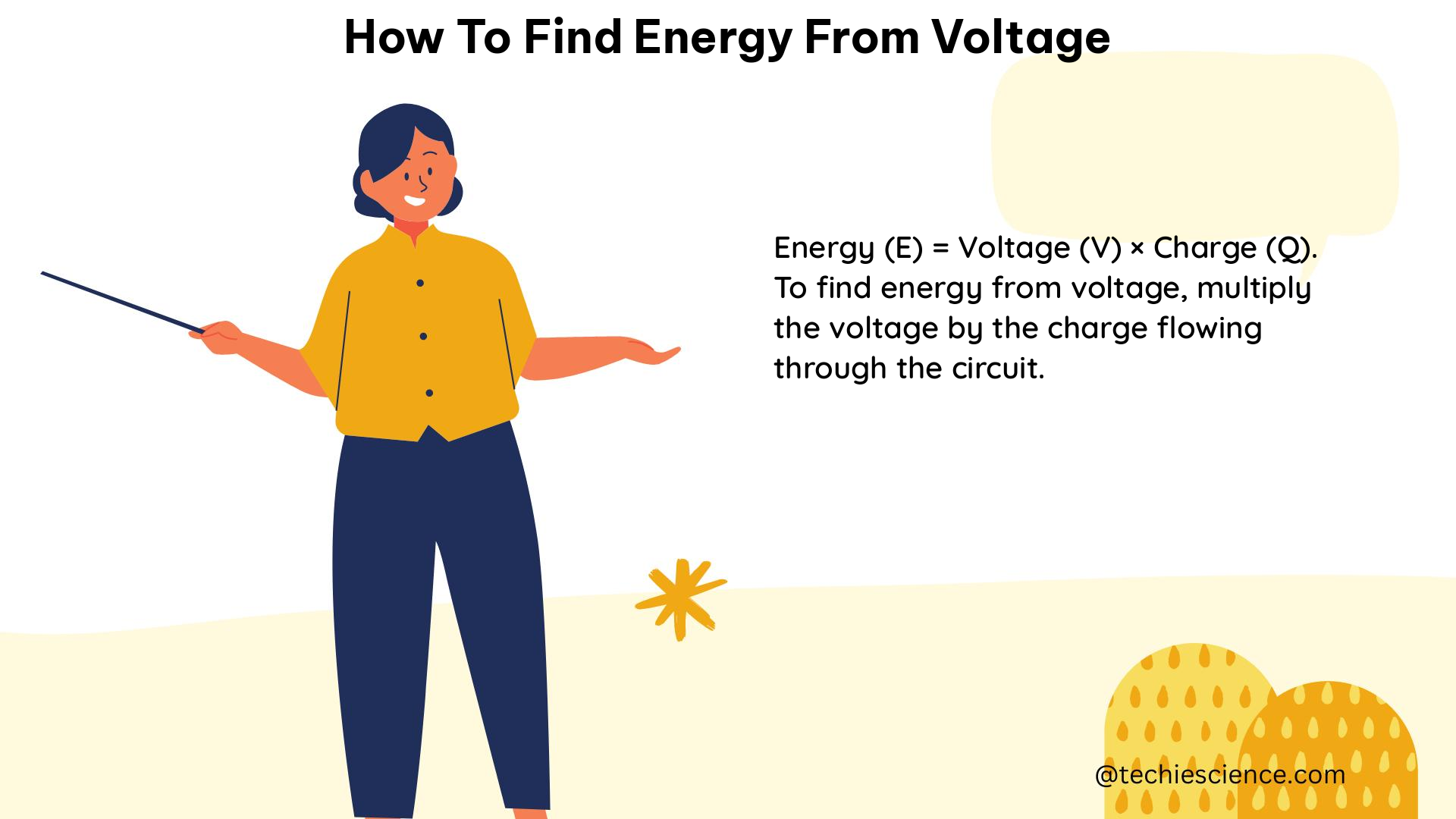In the world of electrical engineering and physics, understanding the relationship between voltage, current, and energy is crucial. To find the energy consumed in a circuit, we need to consider the power, which is the rate at which energy is transferred. This comprehensive guide will walk you through the step-by-step process of calculating energy from voltage, providing you with the necessary formulas, examples, and practical applications.
Understanding Power and Energy
Power is the rate of energy transfer, and it is calculated by multiplying the voltage (V) and current (I) in a direct current (DC) circuit, as per the formula:
P = VI
In an alternating current (AC) circuit, the power is calculated using the root mean square (RMS) values of voltage and current, and the power factor (cosφ), as per the formula:
P = VIcosφ
The energy consumed in a circuit over a period of time can be calculated by multiplying the power by the time duration. The unit of energy is watt-second (Ws) or joule (J) in the International System of Units (SI). In practical applications, energy is often measured in kilowatt-hours (kWh), which is the energy consumed by a circuit delivering one kilowatt of power for one hour.
Measuring Voltage and Current

To calculate the energy consumed in a circuit, we need to measure the voltage and current over time. This can be done using a data acquisition system (DAQ) or an oscilloscope, which can capture and record voltage and current waveforms over time.
Using a Data Acquisition System (DAQ)
A DAQ system is a powerful tool for measuring and recording voltage and current data. It typically consists of sensors, signal conditioning, and a computer or microcontroller for data processing and analysis. By connecting the voltage and current sensors to the circuit, the DAQ system can capture the waveforms and store the data for further analysis.
Using an Oscilloscope
An oscilloscope is another device that can be used to measure voltage and current over time. It displays the waveforms of the voltage and current, allowing you to visually inspect the signals and extract the necessary data for energy calculations.
Calculating Energy Consumption
Once you have the voltage and current data, you can calculate the energy consumed in the circuit using the following steps:
- Calculate Power: For a DC circuit, use the formula
P = VI. For an AC circuit, use the formulaP = VIcosφ. - Integrate Power over Time: To calculate the energy consumed over a period of time
T, use the integral:
E = ∫[P(t) dt] from 0 to T
This integral can be approximated numerically using rectangular or trapezoidal methods, depending on the accuracy required and the resolution of the voltage and current measurements.
Example Calculation
Let’s consider a circuit with a voltage of 10 volts and a current of 2 amperes. The power consumed in this circuit is:
P = VI = 10 V × 2 A = 20 W
If the circuit is operating for one hour, the energy consumed is:
E = P × t = 20 W × 1 h = 20 Wh or 0.02 kWh
In the case of a varying voltage and current, the energy consumed can be calculated by integrating the power over time, as shown in the formula above.
Advanced Techniques and Considerations
Power Factor Correction
In AC circuits, the power factor (cosφ) can have a significant impact on the energy consumption. Power factor correction techniques can be used to improve the power factor and reduce the energy losses in the circuit.
Harmonic Analysis
In the presence of non-linear loads or distorted waveforms, harmonic analysis can be used to understand the energy consumption more accurately. Harmonic analysis involves the decomposition of the voltage and current waveforms into their fundamental and harmonic components, which can then be used to calculate the power and energy consumption.
Energy Efficiency Calculations
Energy efficiency is an important consideration in many applications, such as power generation, transmission, and consumption. Techniques like efficiency calculations, energy audits, and energy management systems can be used to optimize the energy consumption and improve the overall efficiency of the system.
Conclusion
Mastering the art of finding energy from voltage is a crucial skill for physics students and electrical engineers. By understanding the fundamental principles of power and energy, and utilizing the appropriate measurement techniques and calculation methods, you can accurately determine the energy consumed in a circuit. This knowledge will not only help you in your academic pursuits but also in real-world applications, where efficient energy management is of paramount importance.
References
- Dewesoft. (2021). What is Power Analysis and Power Measurements. Retrieved from https://dewesoft.com/blog/what-is-power-analysis/
- Electronics Stack Exchange. (2023). Best way to calculate Energy used in a circuit. Retrieved from https://electronics.stackexchange.com/questions/658173/best-way-to-calculate-energy-used-in-a-circuit
- University of Arizona Cooperative Extension. (2019). Calculations for a Grid-Connected Solar Energy System. Retrieved from https://extension.arizona.edu/sites/extension.arizona.edu/files/pubs/az1782-2019.pdf

The lambdageeks.com Core SME Team is a group of experienced subject matter experts from diverse scientific and technical fields including Physics, Chemistry, Technology,Electronics & Electrical Engineering, Automotive, Mechanical Engineering. Our team collaborates to create high-quality, well-researched articles on a wide range of science and technology topics for the lambdageeks.com website.
All Our Senior SME are having more than 7 Years of experience in the respective fields . They are either Working Industry Professionals or assocaited With different Universities. Refer Our Authors Page to get to know About our Core SMEs.